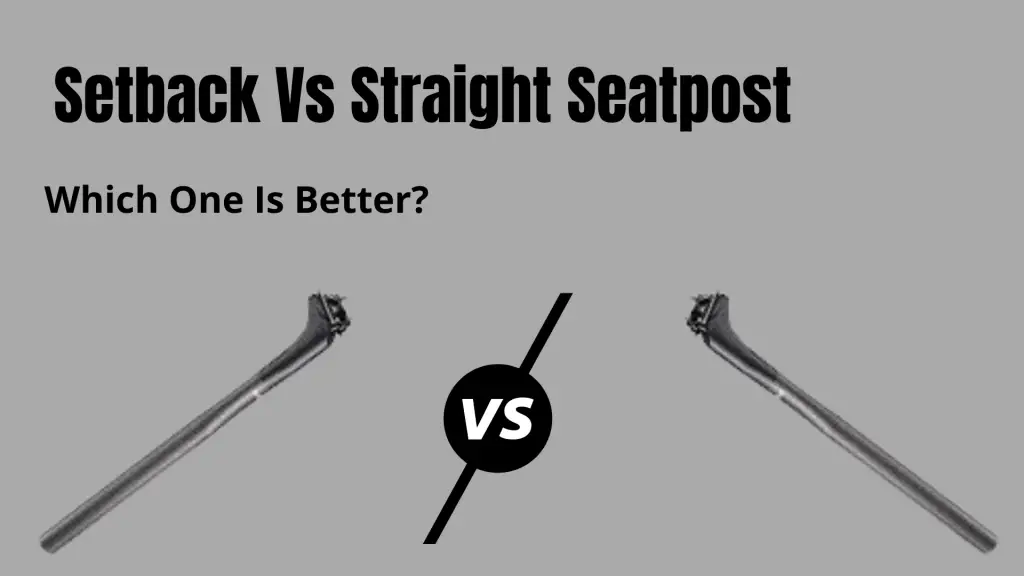Cycling is a fun activity and quite a useful one as well. And you might be a new cyclist, who just started to bike to places. Or you might be a veteran but picked up after a long break.
Immediately you understand the pain it causes. The bruises and irritation from biking is quite the demotivating factor while cycling.
So, why does bike seat bruising happen and what can you do about it?
Your body takes time to adjust to strenuous activity. The friction and posture along with incorrect saddle height and poor weight distribution can cause bruising. Hence, you need to adjust your saddle height according to your height. You can also use padded shorts & chamois cream to reduce friction.
That was a basic overview. Let’s get into the topic in detail. So tag along!
Common Bike Seat Bruises
Starting cycling after a long time and long rides often result in bruises. A selected few parts of the body suffer the most from this.
Due to their differences, the solutions to them are also different. That’s why it’s important to know and identify which part of your body is getting affected the most.
Let’s see which bruises are most likely to happen to you:
Bruises In Sit Bones:
When riding, you’re going to be sitting on your saddle most of the time. And your weight should be taken by your sit bones.
Prolonged sitting on your sit bones can cause an inflammatory response and bruise. That’s what causes buttock pain after cycling.
This pain should go away after a few days of riding. As your body gets adjusted to the new routine. But improper weight distribution will keep causing bruises.
Perineum Soreness:
The perineum is the muscle region between your genitalia and rectum. This region hosts some very important nerves.
Improper fitting, saddle height can cause soreness in this region. This should be taken very seriously as it can lead to serious injuries.
Chafing Of Thighs:
This is quite normal, as while riding your inner thighs will repeatedly come in contact with clothes. The friction, along with the moisture from sweat can cause chafing.
Naturally, after a few days, the skin on those places should thicken. And chafing should be reduced.
But a badly fitted saddle will prolong this chafing.
Saddle Sores:
The most common saddle sore is an infected hair follicle. The constant pressure of body weight along with moisture and dirt causes inflammatory boils.
Leaving them untreated can cause complex and painful problems in the future.
Temperature and lack of blood flow from long rides also cause soreness. Especially in the area around where the saddle touches.
To avoid these problems there is saddle soreness treatment that you can follow.
Solutions To Bruises & Soreness
Most probably you are thinking of cycling to your daily commute. But questions like can you bruise your bum from cycling are confusing you while making a decision.
Bruising can be pretty demoralizing when doing this every day.
That’s why we gathered a few solutions for you.
Gradual Build-up:
If you are new to cycling or you are coming back after a long time, you should take it slowly.
Do not aim for high distances or long times in one go on the first day. Let your body get adjusted to the new conditions that you’re putting it through.
Building up the distance and time slowly will let certain parts of your body get accustomed and adapted to the new stress routine.
Seat Fitting & Positioning:
This is one of the most important parts of biking but is mostly overlooked by novice bikers.
The height that the seat should be in varies from rider to rider. As it depends on the height of the rider itself.
Whether you’re using a setback or straight seat post, your saddle needs to be at a perfect height.
Adjusting the height of the seat for a rider is called fitting. And expert cyclists do it all the time when riding. Because just like normal bikes, mountain bike seat bruising is also identically problematic.
The ideal way of fitting is, you should sit on your saddle and use your feet to reach your pedal at the lowest position.
There you should be able to press it with your heel with legs straight.
This is the ideal height that your cycle seat should be.
And also your seat should be totally flat with respect to your handle. If you want you can tilt it ever so slightly downwards.
Choosing The Right Saddle:
You may have heard that the wider the saddle the better. Or you could hear that narrow saddles are the healthiest.
Some have fluffy bike seat cushion, and some are just plain stiff.
But the truth is, there is a saddle out there that is perfect for you.
Choose a structure, which is best supported by a saddle that fits you perfectly.
Most modern cycle shops will allow you to try out saddles before purchasing.
If you’re unsure you could try out saddles from selle italia, which has a prestige for making great saddles.
Accessories For Extra Comfort:
Even after you have taken care of all the other points, it will still take some time for your body to get used to it. But you need something for instant comfort.
And other than that there are accessories that can make your riding experience much better. Using them isn’t mandatory. But they add a pleasant touch.
Padded Shorts:
These are biking shorts that have extra padding in their crotch area. This provides protection to your skin from chafing.
But one thing to remember is do not wear underwear over these. These shorts are meant to be worn alone.
Chamois Cream:
Chafing and irritation are mainly caused by friction. The skin on skin or cloth on skin repeatedly makes the skin irritated.
Chamois cream is a lubricant that helps reduce that.
You just have to apply chamois cream at the place of contact. And they will reduce the friction and give you a smooth experience.
You can choose chamois cream from the following list.
- Chamois Butt’r – Can be used anywhere where faced chafing, specially for thighs
- Gooch Guard Chamois Cream– No allergens, Made for a smoother ride
Hygiene:
Lastly, you need to stay hygienic and fresh after a day of cycling. All the workouts will make you sweat. And all that moisture and dirt becomes a breeding ground for bacteria.
Wash well after every cycling session and wash your undergarments or padded shorts thoroughly after every use.
Keep yourself clean and that will save you from a lot of irritation and chafing.
So, now you know that can you get bruises from biking is a totally common question. And for that, we have given you all the possible reasons and answers too
Hopefully, this will help you in your next cycling session.
Frequently Asked Questions (FAQs)
Where should sit bones be on bike saddle?
Sit bones should lie directly flat in the saddle. That way the proper weight distribution is ensured. This also maintains good blood flow. And overall causes less bruising.
Should I tilt my saddle forward?
You can tilt your saddle forward if you want to release some stress off of your sit bones. This will give your sit bones more room to be comfortable. But keep in mind that this will put extra pressure on your arms and shoulders.
What’s the purpose of a hole in a saddle?
A hole in the middle of the saddle releases pressure from the delicate perineum tissues. It also ensures better air circulation and helps redistribute weight in a smaller area. Most modern bikes have holes in the middle of their saddle.
Conclusion
That’s all you need to know about bike seat bruising. Hopefully, this article will help you have a better experience while riding.
We also hope that you choose cycling as your daily transportation as it’s very helpful for the environment.
Best of luck and we will see you next time!


